The outer membrane protein Tp92 of Treponema pallidum induces human mononuclear cell death and IL-8 secretion
- PMID: 30596396
- PMCID: PMC6237608
- DOI: 10.1111/jcmm.13879
The outer membrane protein Tp92 of Treponema pallidum induces human mononuclear cell death and IL-8 secretion
Abstract
Treponema pallidum is the pathogen that causes syphilis, a sexually transmitted disease; however, the pathogenic mechanism of this organism remains unclear. Tp92 is the only T. pallidum outer membrane protein that has structural features similar to the outer membrane proteins of other Gram-negative bacteria, but the exact functions of this protein remain unknown. In the present study, we demonstrated that the recombinant Tp92 protein can induce human mononuclear cell death. Tp92 mediated the human monocytic cell line derived from an acute monicytic leukemia patient (THP-1) cell death by recognizing CD14 and/or TLR2 on cell surfaces. After the stimulation of THP-1 cells by the Tp92 protein, Tp92 may induce atypical pyroptosis of THP-1 cells via the pro-caspase-1 pathway. Meanwhile, this protein caused the apoptosis of THP-1 cells via the receptor-interacting protein kinase 1/caspase-8/aspase-3 pathway. Tp92 reduced the number of monocytes among peripheral blood mononuclear cells. Interestingly, further research showed that Tp92 failed to increase the tumour necrosis factor-α, interleukin (IL)-1β, IL-6, IL-10, IL-18 and monocyte chemotactic protein 1 (MCP)-1 levels but slightly elevated the IL-8 levels via the Nuclear Factor (NF)-κB pathway in THP-1 cells. The data suggest that Tp92 recognizes CD14 and TLR2, transfers the signal to a downstream pathway, and activates NF-κB to mediate the production of IL-8. This mechanism may help T. pallidum escape recognition and elimination by the host innate immune system.
Keywords: Treponema pallidum; CD14; IL‐8; TLR2; Tp92; apoptosis; membrane protein; pyroptosis.
© 2018 The Authors. Journal of Cellular and Molecular Medicine published by John Wiley & Sons Ltd and Foundation for Cellular and Molecular Medicine.
Figures
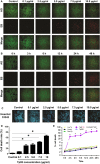
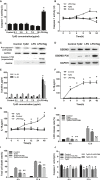
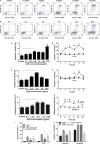



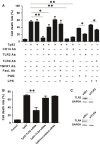
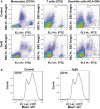

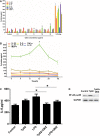
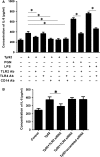

Similar articles
-
A preliminary study on the proinflammatory mechanisms of Treponema pallidum outer membrane protein Tp92 in human macrophages and HMEC-1 cells.Microb Pathog. 2017 Sep;110:176-183. doi: 10.1016/j.micpath.2017.06.046. Epub 2017 Jun 29. Microb Pathog. 2017. PMID: 28668606
-
The outer membrane protein Tp92 of Treponema pallidum delays human neutrophil apoptosis via the ERK, PI3K/Akt, and NF-κB pathways.Mol Microbiol. 2023 Nov;120(5):684-701. doi: 10.1111/mmi.15164. Epub 2023 Sep 17. Mol Microbiol. 2023. PMID: 37718557
-
The Treponema pallidum outer membrane protein Tp92 activates endothelial cells via the chemerin/CMKLR1 pathway.Int J Med Microbiol. 2020 Apr;310(3):151416. doi: 10.1016/j.ijmm.2020.151416. Epub 2020 Mar 9. Int J Med Microbiol. 2020. PMID: 32173267
-
Treponema pallidum, the syphilis spirochete: making a living as a stealth pathogen.Nat Rev Microbiol. 2016 Dec;14(12):744-759. doi: 10.1038/nrmicro.2016.141. Epub 2016 Oct 10. Nat Rev Microbiol. 2016. PMID: 27721440 Free PMC article. Review.
-
Surface antigens of the syphilis spirochete and their potential as virulence determinants.Emerg Infect Dis. 1997 Jan-Mar;3(1):11-20. doi: 10.3201/eid0301.970102. Emerg Infect Dis. 1997. PMID: 9126440 Free PMC article. Review.
Cited by
-
Subversion of the immune response of human pathogenic spirochetes.J Clin Lab Anal. 2022 May;36(5):e24414. doi: 10.1002/jcla.24414. Epub 2022 Apr 11. J Clin Lab Anal. 2022. PMID: 35403248 Free PMC article. Review.
-
Recombinant Treponema pallidum protein Tp0768 promotes proinflammatory cytokine secretion of macrophages through ER stress and ROS/NF-κB pathway.Appl Microbiol Biotechnol. 2021 Jan;105(1):353-366. doi: 10.1007/s00253-020-11018-8. Epub 2020 Nov 20. Appl Microbiol Biotechnol. 2021. PMID: 33216161 Free PMC article.
-
Research Progress on Pyroptosis in Hematological Malignancies.Curr Treat Options Oncol. 2023 Oct;24(10):1439-1450. doi: 10.1007/s11864-023-01119-7. Epub 2023 Aug 28. Curr Treat Options Oncol. 2023. PMID: 37635159 Free PMC article. Review.
-
The emerging role of pyroptosis in pediatric cancers: from mechanism to therapy.J Hematol Oncol. 2022 Oct 8;15(1):140. doi: 10.1186/s13045-022-01365-6. J Hematol Oncol. 2022. PMID: 36209102 Free PMC article. Review.
-
The N-terminal D1 domain of Treponema pallidum flagellin binding to TLR5 is required but not sufficient in activation of TLR5.J Cell Mol Med. 2019 Nov;23(11):7490-7504. doi: 10.1111/jcmm.14617. Epub 2019 Sep 7. J Cell Mol Med. 2019. PMID: 31493340 Free PMC article.
References
-
- Salavec M, Bostik V, Kapla J, et al. A repeated syphilis infection imported from Thailand in an HIV positive couple of men‐who‐have‐sex‐with‐men in Czech Republic. Travel Med Infect Dis. 2014;12:84‐87. - PubMed
-
- Lamkanfi M, Dixit VM. Manipulation of host cell death pathways during microbial infections. Cell Host Microbe. 2010;8:44‐54. - PubMed
Publication types
MeSH terms
Substances
LinkOut - more resources
Full Text Sources
Medical
Research Materials
Miscellaneous

